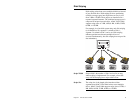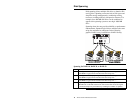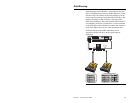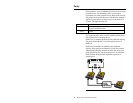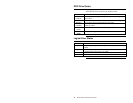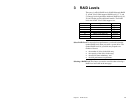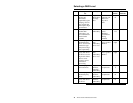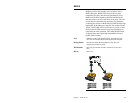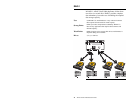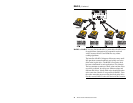
Chapter 2 Introduction to RAID
17
Disk Array Types
The RAID disk array types are:
Type Description
Software-
Based
The array is managed by software running in a host computer using
the host CPU bandwidth. The disadvantages associated with this
method are the load on the host CPU and the need for different
software for each operating system.
SCSI to SCSI The array controller resides outside of the host computer and
communicates with the host through a SCSI adapter in the host.
The array management software runs in the controller. It is
transparent to the host and independent of the host operating
system. The disadvantage is the limited data transfer rate of the
SCSI channel between the SCSI adapter and the array controller.
Bus-Based The array controller resides on the bus (for example, a PCI or
EISA bus) in the host computer and has its own CPU to generate
the parity and handle other RAID functions. A bus-based controller
can transfer data at the speed of the host bus (PCI, ISA, EISA, VL-
Bus) but is limited to the bus it is designed for. ADAC Ultra2 S466
resides on a PCI bus, which can handle data transfer at up to 132
MB/s. With ADAC Ultra2 S466, the channel can handle data
transfer rates up to 80 MB/s per SCSI channel.
Enclosure Management
Enclosure management is the intelligent monitoring of the
disk subsystem by software and/or hardware.
The disk subsystem can be part of the host computer or
separate from it. Enclosure management helps you stay
informed of events in the disk subsystem, such as a drive or
power supply failure. Enclosure management increases the
fault tolerance of the disk subsystem.



